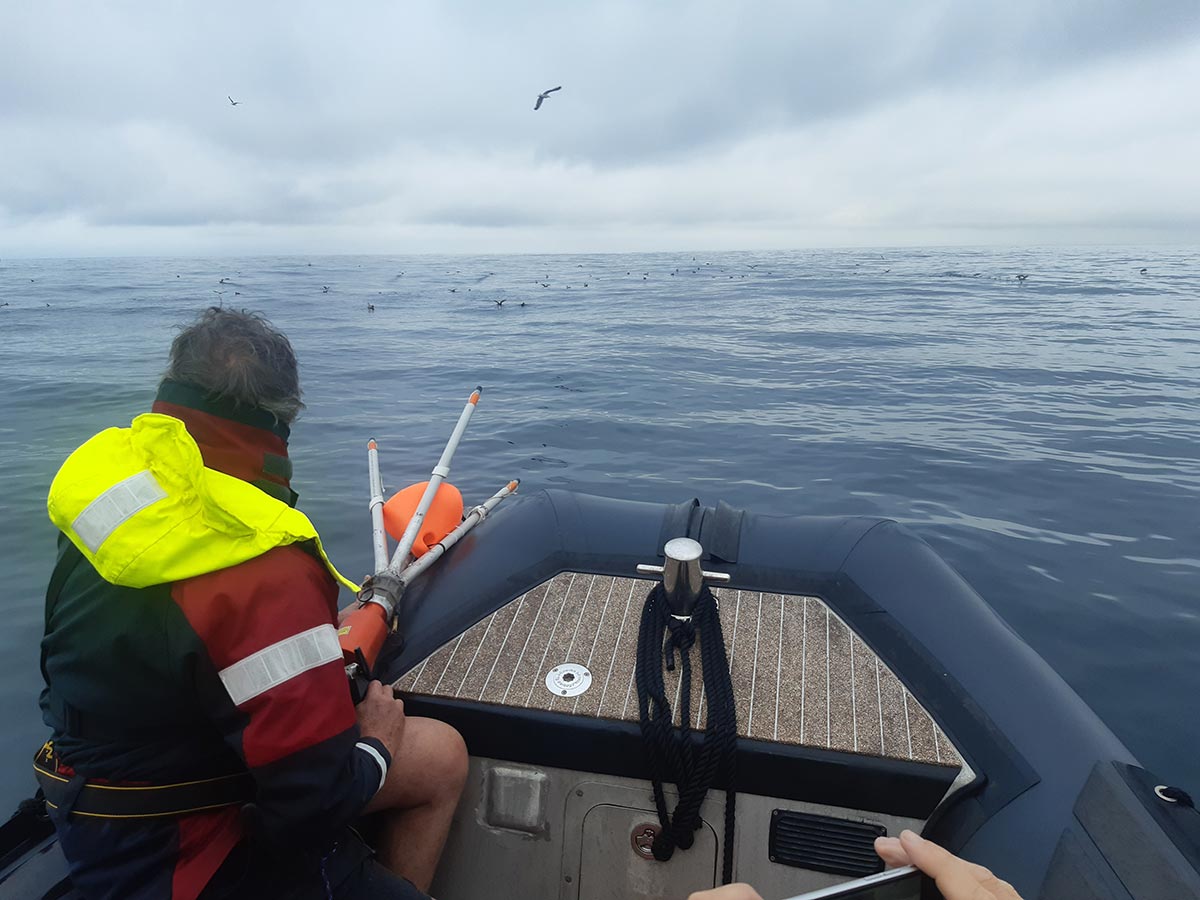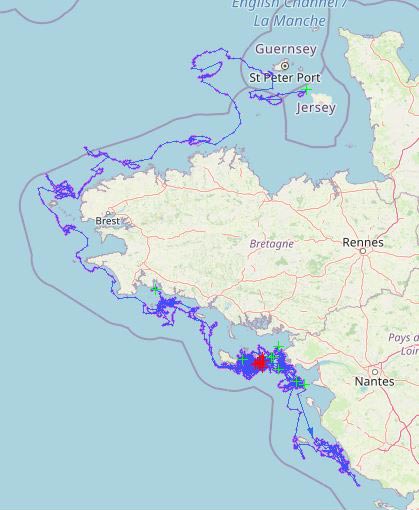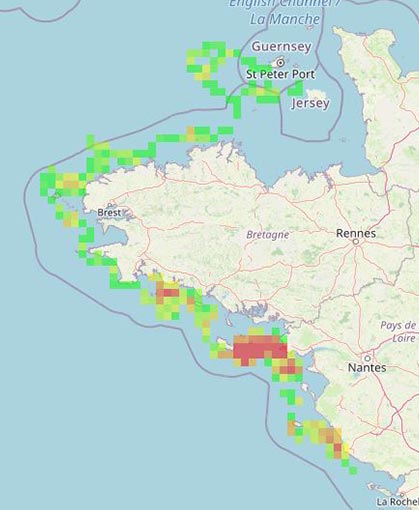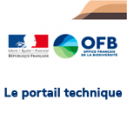A first successful campaign for the monitoring of the Balearic Shearwater
As part of the implementation of the National Action Plan for the Balearic Shearwater, the French biodiversity agency (OFB) and its partners have successfully carried out a monitoring operation of this species in southern Brittany.
The Balearic Shearwater (Puffinus mauretanicus) is an endemic breeder in its namesake Spanish archipelago, spending the summer (June-October) on the Atlantic and Channel coasts of France.
With an estimated population of 25,000 individuals, it is considered Europe's most endangered seabird. To halt the decline of this species, France launched a National Action Plan (PNA) in 2021, led by the French biodiversity agency.
As part of this, a data acquisition initiative took place from 15-31 August 2022 in the waters of Mor Braz, off the south Brittany coast. To carry out the survey, the agents were divided into two teams. The first was responsible for capturing the birds and the second was in charge of taking samples and equipping the individuals with GPS transmitters.
An innovative method
During a first attempt ten years ago, a few individuals had been captured in flight with a large landing net. This method was not very efficient in terms of number of captures and was considered too disturbing for the birds.
During the fieldwork, a new tool – a 'netgun', which is a net propelled by an air gun – was tested. The method was implemented thanks to the experience of the Northern New Zealand Seabird Trust, which uses it to capture seabirds in Oceania, together with the two OFB agents on board. This innovative approach was a success
A total of 30 Balearic Shearwaters were captured, the maximum number authorized by the Centre for Research on the Biology of Bird Populations (CRBPO).
Once captured, feather and blood samples were taken by the LIENSs. The team was aboard a catamaran of the SKRAVIK association which provided technical and logistical support.
This will make it possible to characterize the shearwaters' diet, but also assess contamination levels by heavy metals and organic pollutants.
Ten individuals were also equipped with GPS-GSM transmitters in order to follow their movements after being released. This monitoring aims in particular to understand the functional zones of the species, to assess the shearwaters' dependence on fishing discards for food and to study the impacts of offshore windfarms.
According to the excellent first results, this campaign should be conducted annually over a five-year period. The data collected will make it possible to put in place effective management measures to protect Balearic Shearwater. The new capture method could also be deployed in other seabird monitoring operations throughout France.







